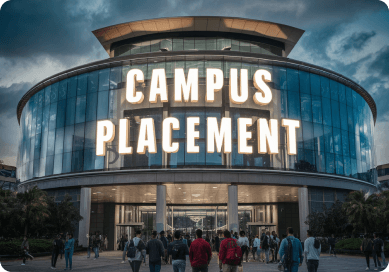Enter OTP



Paris, India

Paris, India

Cost Of Living

Undergraduate Fees International Students

Post Graduate Fees International Students

Mines ParisTech stands out for its blend of rigorous theoretical education and hands-on practical training, captured in its motto “Theory and Practice.” It was ranked No.1 among French engineering schools for research quality by New Factory in 2016. Internationally, it placed 251–300 in the World University Rankings 2017 and 401–500 in the Shanghai Rankings 2019. Nationally, it consistently ranks among the top engineering institutions in Paris. The university is also known for producing highly accomplished alumni and researchers. Its strong research culture and industry connections make it a leader in engineering education.
Maurice Allais (1911–2010) was awarded the 1988 Nobel Prize in Economic Sciences for his pioneering work on market e... View More
Maurice Allais (1911–2010) was awarded the 1988 Nobel Prize in Economic Sciences for his pioneering work on market equilibrium, capital theory, and efficient resource allocation. His research advanced economic thought on individual choice under uncertainty and led to the “Allais paradox” in decision theory. A graduate of Mines ParisTech, he combined mathematical rigor with philosophical insight. Over his long career, he influenced economics, finance, and public policy in France. He was also a member of the Académie des Sciences Morales et Politiques. Allais's legacy endures in both academic theory and debates about rational choice. View Less
Georges Charpak (1924–2010) earned the 1992 Nobel Prize in Physics for inventing particle detection techniques, notabl... View More
Georges Charpak (1924–2010) earned the 1992 Nobel Prize in Physics for inventing particle detection techniques, notably the multiwire proportional chamber, which dramatically improved experimental precision. His inventions revolutionized experimental high‑energy physics and found applications in medical imaging. A graduate of Mines ParisTech, Charpak was known for his hands‑on curiosity, commitment to education, and belief that science should benefit society. In France and worldwide, he championed science literacy through books, lectures, and public debates. His innovations remain foundational in experimental physics laboratories and medical diagnostics View Less
Léon Walras (1834–1910) stands as a founding figure of mathematical economics and general equilibrium theory. A gradu... View More
Léon Walras (1834–1910) stands as a founding figure of mathematical economics and general equilibrium theory. A graduate of Mines ParisTech, he introduced formal systems to represent supply, demand, and market-clearing prices across multiple interdependent markets. His work laid the groundwork for modern microeconomics, welfare theory, and monetary economics. Though he lived over a century ago, his vision is still taught in economics programs worldwide. Walras’s depth, ambition, and abstraction cement him as one of the school’s most intellectually influential alumni. View Less
Henri Poincaré (1854–1912), one of the greatest mathematicians and physicists in history, studied at Mines ParisTech ... View More
Henri Poincaré (1854–1912), one of the greatest mathematicians and physicists in history, studied at Mines ParisTech in its early years. He contributed to topology, celestial mechanics, and the theory of dynamical systems, anticipating chaos theory. Poincaré’s work on the three‑body problem influenced the study of nonlinear systems. His philosophical essays and reflections on science and mathematics shaped modern epistemology and science communication. His name still resonates in mathematics and theoretical physics. Poincaré exemplifies the blend of abstraction, creativity, and rigor that still defines Mines ParisTech’s intellectual culture View Less
Carlos Ghosn (born 1954) is a high‑profile business leader who studied at Mines ParisTech before rising to global prom... View More
Carlos Ghosn (born 1954) is a high‑profile business leader who studied at Mines ParisTech before rising to global prominence as CEO of Nissan, Renault, and the Renault–Nissan–Mitsubishi Alliance. He is known for turning around Nissan’s finances in the early 2000s, engineering bold cross‑border mergers, and championing electric vehicle innovation. His career later became subject to legal and ethical controversy. Nonetheless, his strategic vision, cost‑cutting initiatives, and cross‑cultural leadership marked him as one of the most influential global executives of his generation View Less
Tidjane Thiam (born 1962) is a business executive known for leading Credit Suisse as CEO from 2015 to 2020. A Mines Pari... View More
Tidjane Thiam (born 1962) is a business executive known for leading Credit Suisse as CEO from 2015 to 2020. A Mines ParisTech graduate, he brought strong analytical skills and international perspective, previously holding leadership roles in insurance (AXA) and consulting. Under his leadership, Credit Suisse improved performance, diversified revenue, and renewed emphasis on wealth management. Throughout, he advocated for diversity, innovation, and long-term strategy in banking. His tenure reshaped perceptions of global banking leadership from emerging‑market roots. View Less
Anne Lauvergeon (born 1959) led Areva, the French nuclear group, from 2001 to 2011. A Mines ParisTech alumna, she combin... View More
Anne Lauvergeon (born 1959) led Areva, the French nuclear group, from 2001 to 2011. A Mines ParisTech alumna, she combined engineering expertise with executive leadership in one of the world’s most complex energy industries. She steered Areva through international expansion, nuclear development and diversification into renewables. A vocal advocate for sustainable energy and innovation, she later served on boards (such as Rio Tinto and Chanel) and advised governments. Her career demonstrates how a technical foundation enables global leadership at the intersection of industry, politics, and environmental transition View Less
Jean‑Martin Folz (born 1947) is a seasoned corporate leader, best known as CEO of PSA Peugeot Citroën from 1995 to 20... View More
Jean‑Martin Folz (born 1947) is a seasoned corporate leader, best known as CEO of PSA Peugeot Citroën from 1995 to 2007. A Mines ParisTech graduate, he led the automaker through major restructuring, expansion in Europe and emerging markets, and technological investments in cleaner engines. Under his leadership, PSA delivered strong financial performance, diversified models and brands, and expanded its global footprint. His strategic adaptability and engineering insight helped modernize France’s auto sector at the turn of the century View Less
Thierry Desmarest (born 1945) served as CEO of Total (now TotalEnergies), one of the world’s largest oil and gas compa... View More
Thierry Desmarest (born 1945) served as CEO of Total (now TotalEnergies), one of the world’s largest oil and gas companies, from 1995 to 2010. A Mines ParisTech alumnus, he led Total’s international expansion, including the merger with PetroFina, oil discoveries, and growth into LNG and renewable energies. His approach combined technical acumen with strategic foresight in a volatile energy market. Desmarest oversaw one of France’s most significant corporate transformations and left a lasting mark on global energy leadership View Less
Jean‑Laurent Bonnafé (born 1957) has been the CEO of BNP Paribas since 2011. A graduate of Mines ParisTech, he rose... View More
Jean‑Laurent Bonnafé (born 1957) has been the CEO of BNP Paribas since 2011. A graduate of Mines ParisTech, he rose through banking and finance roles to lead one of Europe’s largest banks. Known for resilience, risk management and digital transformation, he steered BNP Paribas through post‑2008 reforms, regulatory changes and global expansion. Under his leadership, the bank strengthened capital positions, embraced sustainability, and extended its international presence—particularly in retail and investment banking. Bonnafé combines technical training with deep understanding of finance and governance View Less
Mines ParisTech offers a compact yet resource-rich infrastructure tailored to cutting-edge research and practical learning. Its main campus in the heart of Paris provides access to well-equipped laboratories, collaborative research centers, and advanced technical facilities. Students benefit from modern classrooms, a comprehensive digital library, and dedicated spaces for innovation and prototyping. The school also maintains specialized labs in fields like materials science, robotics, and energy systems. Its integration with PSL University ensures shared access to broader scientific infrastructure. Overall, the campus blends tradition with tech, enabling students to engage with real-world industrial challenges right from the start.
Student life at Mines Paris – PSL is rich, dynamic, and deeply student-driven. With over 40 student associations, there’s always something happening—from organizing cultural festivals and sports tournaments to robotics competitions and music performances. The Bureau des Élèves (BDE) is central to student life, managing events, parties, and daily activities on campus. Students also actively participate in humanitarian initiatives, entrepreneurial projects, and even high-level consulting missions. The school’s location in central Paris adds another layer of vibrancy, offering access to art, cuisine, and a global culture. Whether you're into academics, activism, or adventure, there's space to belong and lead.


PSL offers strong career support through its in-house career centre, which connects students with internships, research roles, and job opportunities across industries. The school hosts dedicated recruitment forums where students interact directly with top employers. Regular workshops on resume writing, interview prep, and professional communication help students polish their profiles. A curated job portal makes it easy to find openings tailored to each academic program. The school’s close ties with industry partners ensure students are job-ready by graduation. Plus, initiatives like JuMP, the student-run consultancy, offer hands-on experience with real clients.
The below information is required while
completing the university application :
key documents you’ll need for applying to the Bachelor’s in Civil Engineering (Cycle Ingénieur) at Mines Paris –?PSL:
Academic transcripts and diploma(s)
You’ll submit official records of secondary education (e.g. baccalauréat), plus any higher?education credentials if applying via university integration. These must include grading details and certified translations if they’re not in English or French.
Motivation letter (lettre de motivation or statement of purpose)
This letter explains why you’re applying, highlights your interest in engineering, and outlines how Mines Paris –?PSL fits your academic and career goals. For international pathways, interviews or oral exams may also evaluate your motivation.
Identity document (passport or national ID)
A scanned copy is required to verify personal identity and nationality, specifically for administrative registration via the OASIS platform.
Proof of French or English proficiency
Since the program is delivered in French (first year) and partly in English later on, you may need to present language certification—especially French at B2 or C1 level. Some applicants emphasize that C1 gives stronger chances.
Medical and civil liability certificates
As part of enrolment, you must provide a medical certificate confirming fitness for sports (often mandatory) and proof of civil liability or personal accident insurance.
Residency and CVEC documentation (international applicants)
International students must submit a valid long?stay visa or residence permit.
Know moreMines ParisTech has a strong reputation for graduate employability, thanks to its close ties with industry and focus on applied research. The university’s recruitment process is supported by its strong alumni network and partnerships with top companies across sectors. Students are often recruited directly through internships, industry projects, and collaborative research. Its multi-campus presence helps connect students with opportunities across different regions. Specialized programs and continuing education courses also enhance job readiness. Graduates from Mines ParisTech are highly sought after in engineering, research, finance, and leadership roles.



Mines ParisTech has earned global recognition through remarkable achievements in research and academics. Nobel Laureate Maurice Allais, an alumnus, was awarded the Nobel Prize in Economics in 1988. The university’s researchers have consistently received prestigious honors, like the ECCOMAS Thesis Prize and the CSMA Thesis Award. PhD students and faculty have been celebrated for outstanding contributions at international symposiums. Henry Proudhon from the Materials Center was honored with the Young International Leader Scholar Award. These accolades reflect the university’s commitment to excellence and innovation in engineering and scientific research.


In 2016, researchers from Mines Paris’s Cemef laboratory received two top honors at the national CSMA Congress on structural mechanics: the CSMA thesis prize awarded to Modesar Shakoor for his doctoral research on 3D modeling of ductile fracture, and a best-poster award given to a first-year PhD student, Chahrazade Bahbah, in 2017. These awards highlight the school’s strength in computational mechanics, its mentorship tradition, and how it pushes early‑career researchers onto international stages in applied science
Between 2014 and 2025, Mines Paris consistently led French engineering schools in the number and volume of contractual research. In 2014 it ranked #1, handling around €23 million annually, with some 760 industrial contracts each year and 200 active corporate partners. The institution operates 18 research centers and 25 industry‑funded chairs, resulting in high impact partnerships with EDF, TOTAL, Renault, PSA, SNECMA and Saint-Gobain. This achievement underscores its role as a research powerhouse bridging academia and industry
As part of PSL Research University, Mines Paris has forged strong global partnerships with top-tier institutions such as MIT, Caltech, Harvard SEAS, Shanghai Jiao Tong, NUS, University of Hong Kong, Novosibirsk State University, and Tokyo Tech. Since joining PSL in 2012, the school’s research presence and student exchange opportunities expanded considerably. These international collaborations elevate its global impact, support co‑authored publications, joint curricula, and help attract top students and faculty from around the world .
By the mid‑2010s, Mines Paris had ramped up its research output: around 440 A‑rank journal articles or books published annually, approximately 80 PhD theses defended, and over 250 faculty‑researchers employed. Its research structure supports major breakthroughs in earth sciences, materials, systems engineering, energy, economics, and systems theory. This sustained, high-quality output cements its position as France’s top engineering research institution, recognized for both academic excellence and industry relevance
In the 2010s, Mines Paris nurtured a wave of entrepreneurial activity: over twenty startup companies emerged in five years, including Spotistic and Nest for All. The school holds over 300 patents or software licenses, with more than €7 million in revenue generated through software industrialization. These outcomes reflect its strong push toward innovation, commercialization of research, and economic impact beyond academia
Through its Professional Ranking of World Universities, Mines Paris – PSL consistently ranks among top institutions globally based on the number of alumni serving as CEOs of Fortune‑500 companies. This unique recognition demonstrates how its graduates reach top leadership roles internationally—evidence of the institution’s strategic training, professional networks, and industry-aligned education
Between 2008 and 2014, Mines Paris jointly launched and supported thematic chairs with ParisTech partners and major corporations. In 2008, it co‑founded the Eco-design of Buildings and Infrastructure Chair (with Vinci); in 2010, the BioMECAM Innovation & Handicap Chair; and in 2014, the Urban Mines Chair (with ecosystem). These multidisciplinary initiatives tackle pressing societal and environmental challenges—introducing research-led engineering solutions for sustainable design, materials reuse, and inclusive innovation
From the late 1990s into the 2000s, Mines Paris became a pioneer in developing emerging scientific disciplines such as geostatistics, mathematical morphology, and systems theory. The Centre for Applied Mathematics (CMA), founded in 1976 and expanded in the 2000s, launched its advanced Master’s in Energy Systems Optimization in 2000 and the Modeling for Sustainable Development Chair in 2008. These programs, run with partners like EDF, Renault, and ADEME, positioned the school at the forefront of sustainable engineering and policy-oriented modeling
Georges Charpak, an alumnus of Mines Paris, was awarded the 1992 Nobel Prize in Physics for his invention of the multiwire proportional chamber. That innovation transformed particle detection and measurement, increasing precision and enabling developments in both physics experiments and medical imaging. His detector design improved sensitivity, allowing experiments at CERN and other major laboratories. Charpak was also an advocate of science education, writing for public audiences and promoting experimental learning. His work exemplifies the school’s motto "Theory and Practice" by combining experimental ingenuity with scientific rigor
In 1988, Maurice Allais, a graduate and long-time researcher at Mines Paris, received the Nobel Prize in Economic Sciences for his groundbreaking work on market equilibrium and decision-making under uncertainty. His concepts—especially the “Allais paradox”—redefined how economists think about individual choice when outcomes are risky. During his career, he received numerous national and international honors: CNRS gold medal (1978), multiple prizes from the Académie des sciences morales et politiques, and membership in the Institut in 1990. His legacy lies both in theory and in applying rigorous models to social policy and financial markets
Mines ParisTech is widely recognized for its innovation and groundbreaking research across multiple disciplines. With 16 departments and advanced laboratories, the university drives developments in science, engineering, and technology. Its researchers have received prestigious awards, including the Nobel Prize in Economics and the CSMA Thesis Award. The school’s strong research output ranked it No.1 for engineering research quality in France by New Factory. Collaborative projects with industries and global institutions fuel real-world impact. The university’s focus on blending theory with practice ensures that research is not just academic, but also deeply applied and relevant.
In 1904, Georges Charpy, a faculty member at Mines ParisTech, introduced a standardized method for measuring material toughness and impact resistance. The test involves striking a notched sample with a pendulum hammer and measuring the energy absorbed before fracture. It quickly became a fundamental procedure in materials science, metallurgy, and structural engineering worldwide. By giving engineers a reliable, quantifiable way to compare steel grades and other materials, Charpy’s test improved design safety across infrastructure, automotive, and aerospace industries. It’s still widely used today
Adrien Claude Bernard Chenot, a Mines Paris alumnus, invented one of the first direct reduction methods for iron ore using coal in retorts. He demonstrated his pre‑reduced iron samples at the 1849 Lisbon Exhibition, and by the Paris Universal Exposition of 1855, he was awarded the Gold Medal of Honour. His process bypassed the traditional blast‑furnace route and produced metallic iron “sponges” at lower energy cost. Chenot also developed an early “electrotrieuse” to separate ore from waste. His innovative metallurgical methods paved the way for more efficient iron production
Claude Burdin, a graduate of Mines ParisTech, proposed the concept and coined the term "turbine" around 1822. He laid the theoretical foundation in a memo to the Académie des Sciences. By 1825, his student Benoît Fourneyron had implemented the design in a mill at Pontgibaud, reaching around 67% efficiency. This vertical-axis water turbine transformed mechanical engineering, enabling powerful, efficient extraction of energy from flowing water. It became the precursor for modern hydroelectric turbines worldwide. Burdin’s vision marked a turning point in renewable energy technologies

Embark on your educational journey with confidence! Our team of admission experts is here to guide you through the process. Book a free session now to receive personalized advice, assistance with applications, and insights into your dream school. Whether you're applying to college, graduate school, or specialized programs, we're here to help you succeed.
